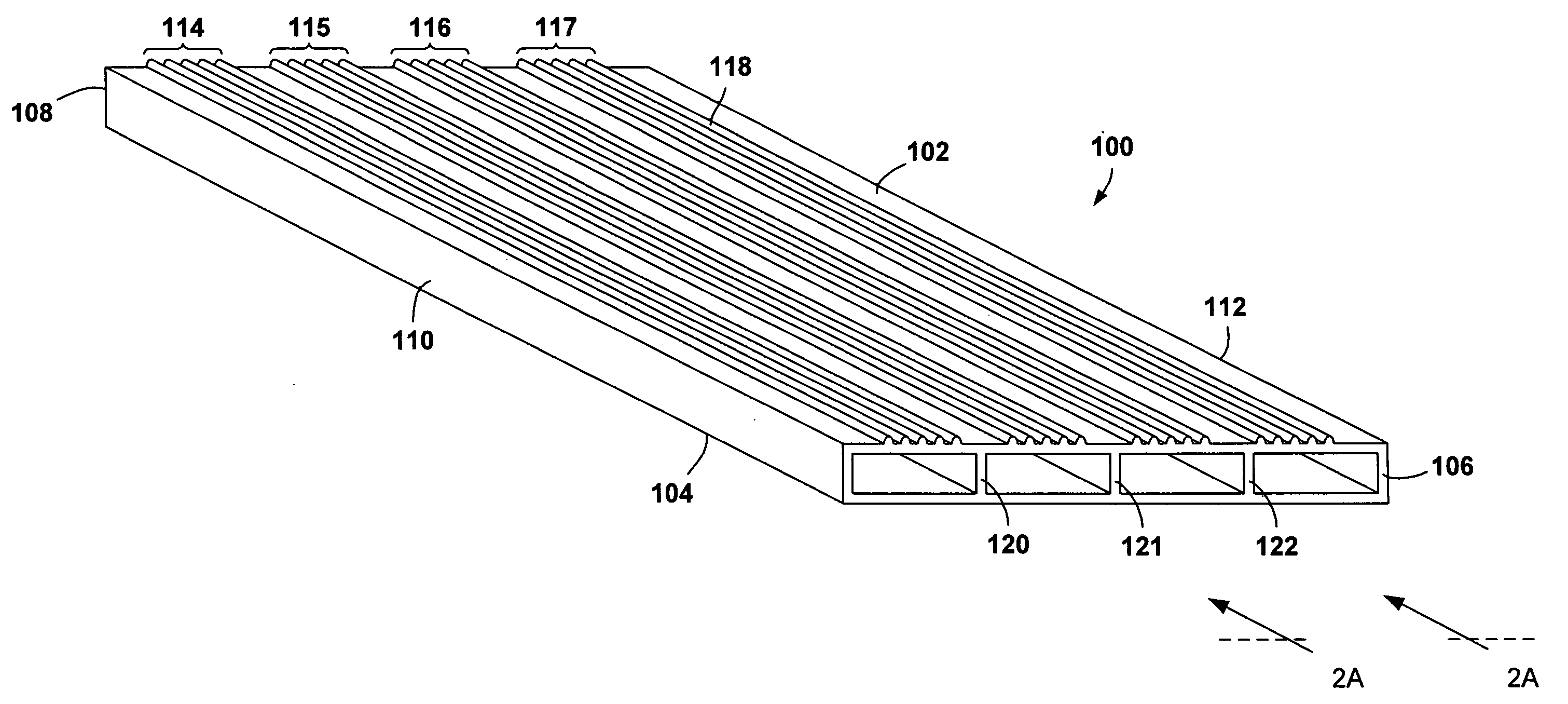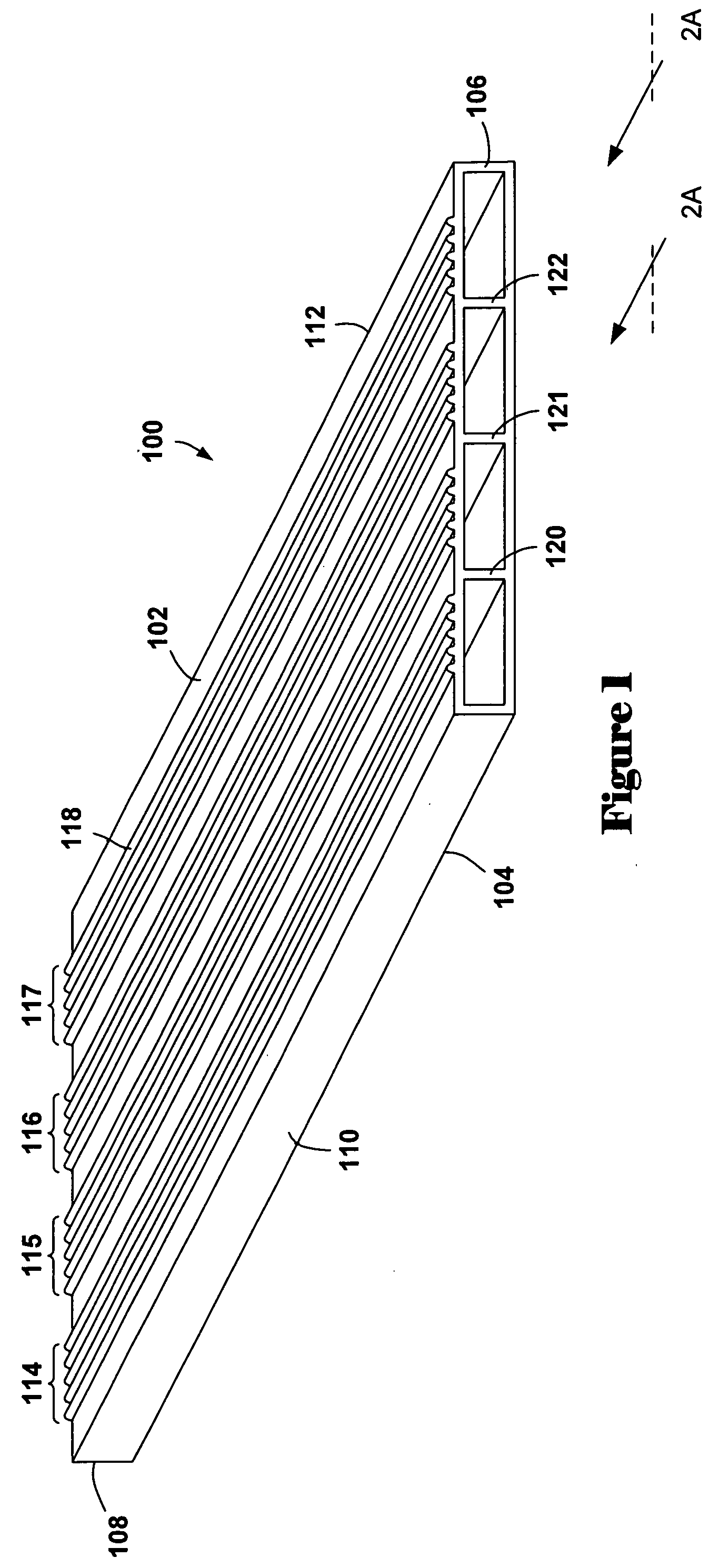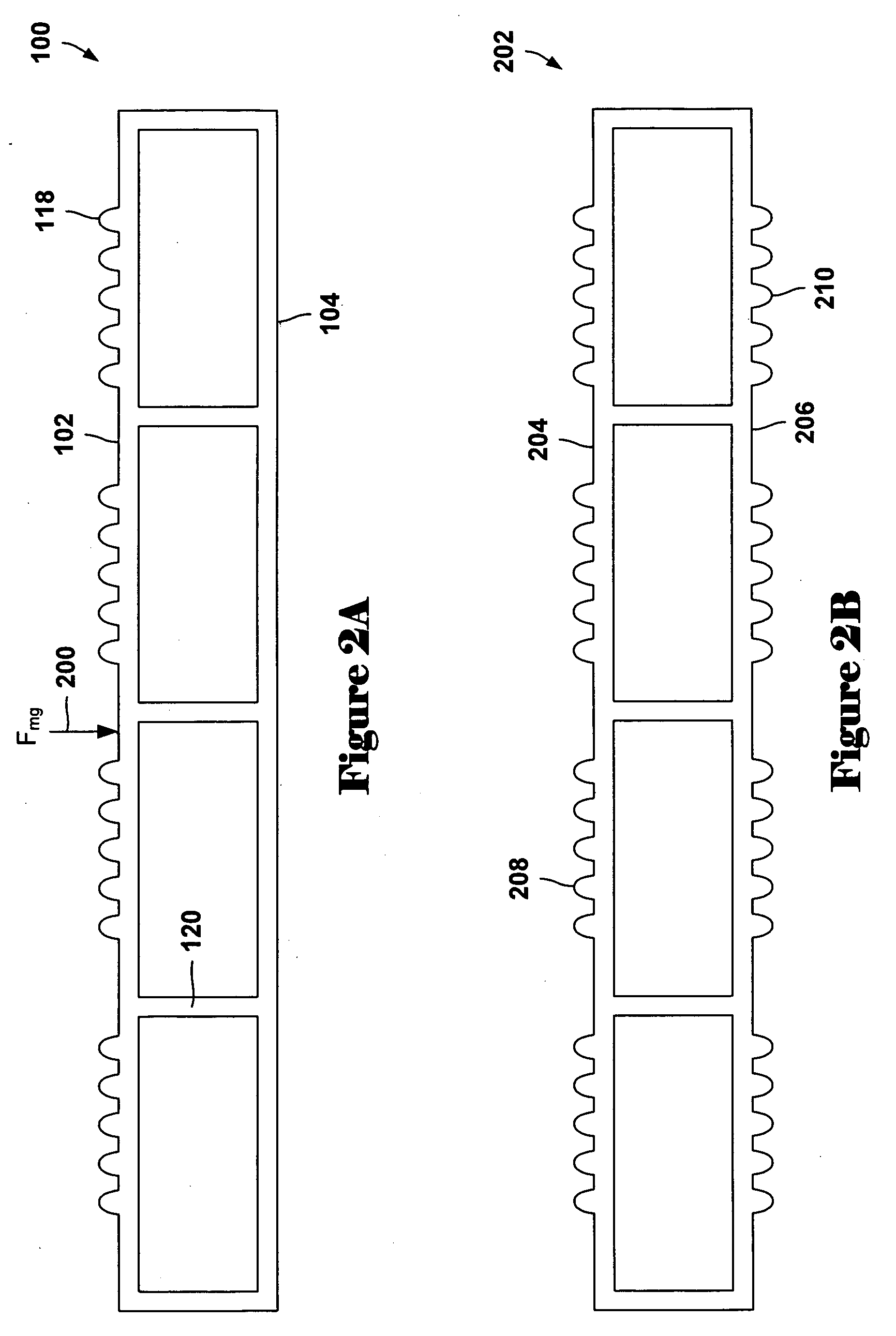Polymer-based handicap ramping system and method of shipping and construction of same
a technology of handicap ramping and polymer, which is applied in the direction of heating types, applications, and floors and walkways, can solve the problems of difficult or unsafe movement of floors and walkways, slippery indoor and outdoor floors and walkways, and many of these traction-providing materials are not practical, so as to promote ease of movemen
- Summary
- Abstract
- Description
- Claims
- Application Information
AI Technical Summary
Benefits of technology
Problems solved by technology
Method used
Image
Examples
Embodiment Construction
[0031]Various embodiments of the present invention are directed to a polymer-based structural member for constructing floors and walkways. In one embodiment of the present invention, a polymer is fabricated into a slip-resistant, polymer-based plank. FIG. 1 illustrates a perspective view of a slip-resistant, polymer-based plank that represents one embodiment of the present invention. Slip-resistant, polymer-based plank 100 includes a top 102, a bottom 104, a first open end 106, a second open end 108 opposite to the first open end 106, a first side 110, and a second side 112 opposite to the first side 110. Top 102 further includes four roughly evenly-spaced traction-ridge sets 114-117 extending roughly parallel to the first side 110 and the second side 112 from the first open end 106 to the second open end 108. Each traction-ridge set contains five roughly parallel traction ridges, such as traction ridge 118. Three interior support walls 120-122 extend the length of the interior of t...
PUM
| Property | Measurement | Unit |
|---|---|---|
| mass per length | aaaaa | aaaaa |
| weight | aaaaa | aaaaa |
| temperature | aaaaa | aaaaa |
Abstract
Description
Claims
Application Information
 Login to View More
Login to View More - R&D
- Intellectual Property
- Life Sciences
- Materials
- Tech Scout
- Unparalleled Data Quality
- Higher Quality Content
- 60% Fewer Hallucinations
Browse by: Latest US Patents, China's latest patents, Technical Efficacy Thesaurus, Application Domain, Technology Topic, Popular Technical Reports.
© 2025 PatSnap. All rights reserved.Legal|Privacy policy|Modern Slavery Act Transparency Statement|Sitemap|About US| Contact US: help@patsnap.com



